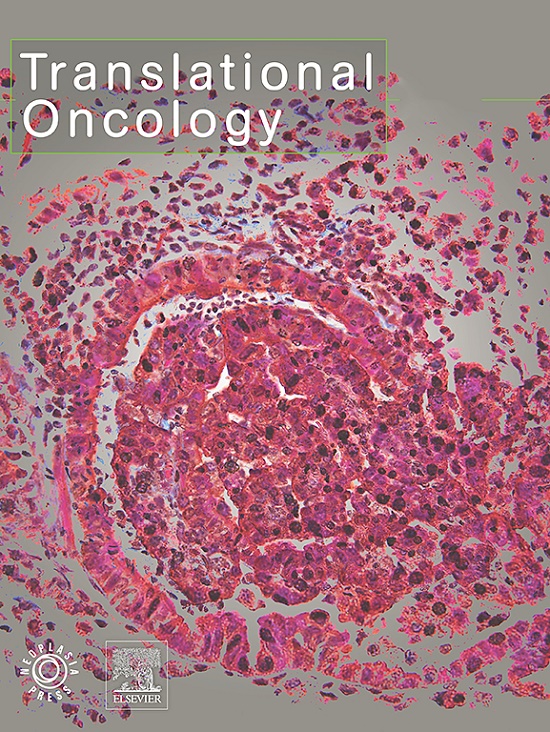KRAS inhibition reverses chemotherapy resistance promoted by therapy-induced senescence-like in pancreatic ductal adenocarcinoma
IF 5
2区 医学
Q2 Medicine
引用次数: 0
Abstract
Background
Emerging evidence suggests that chemotherapy can accumulate senescent-like cells within tumor tissues, a phenomenon linked to therapy resistance. The aim of this study is to analyze the senescence-like state of after-treatment persistent cells associated with KRAS mutational status to offer a therapeutic strategy to target these cells in pancreatic ductal adenocarcinoma (PDAC).
Experimental Design
Three commercial cell lines and five patient-derived primary cell cultures with different KRAS statuses were studied following gemcitabine treatment. Senescence-like status was assessed using SA-β-gal, together with cell cycle regulators such as p21. Additionally, KRAS mutations were modulated using MRTX1133 and AMG-510, and the signaling pathways ERK and AKT were analyzed and modulated in vitro. Finally, p21 expression, associated with the senescence-like state, on patient outcomes and treatment response was analyzed in publicly available bulk RNA-seq and single-nucleus datasets.
Results
We observed an overexpression of p21 alongside an increase in SA-β-gal signal in response to gemcitabine treatment, indicating the induction of a senescence-like state. Specific inhibition of KRAS G12D or G12C mutations reduced SA-β-gal signal and sensitized PDAC cells to gemcitabine. Moreover, ERK inhibition but not AKT inhibition decreased SA-β-gal signal. Additionally, we characterized p21 expression levels in relation to patient outcomes and found that they are modulated by treatment.
Conclusions
This dual-targeted therapeutic strategy holds promises for overcoming the challenges posed by KRAS-driven cancers, particularly in addressing the formidable obstacle of pancreatic cancer.
KRAS抑制逆转治疗诱导的胰腺导管腺癌样衰老引起的化疗耐药
越来越多的证据表明,化疗可以在肿瘤组织中积累衰老样细胞,这一现象与治疗耐药性有关。本研究的目的是分析与KRAS突变状态相关的治疗后持续性细胞的衰老样状态,以提供靶向这些细胞治疗胰腺导管腺癌(PDAC)的治疗策略。实验设计研究了吉西他滨治疗后不同KRAS状态的3个商业细胞系和5个患者来源的原代细胞培养物。使用SA-β-gal和细胞周期调节因子如p21来评估衰老样状态。此外,利用MRTX1133和AMG-510调节KRAS突变,并在体外分析和调节信号通路ERK和AKT。最后,通过公开的大量RNA-seq和单核数据集分析了与衰老样状态相关的p21表达对患者预后和治疗反应的影响。结果我们观察到,在吉西他滨治疗的反应中,p21过表达,SA-β-gal信号增加,表明诱导了衰老样状态。特异性抑制KRAS G12D或G12C突变可降低SA-β-gal信号,使PDAC细胞对吉西他滨敏感。此外,ERK抑制降低了SA-β-gal信号,而AKT抑制不降低。此外,我们表征了p21表达水平与患者预后的关系,并发现它们受到治疗的调节。这种双靶向治疗策略有望克服kras驱动的癌症带来的挑战,特别是在解决胰腺癌的巨大障碍方面。
本文章由计算机程序翻译,如有差异,请以英文原文为准。
求助全文
约1分钟内获得全文
求助全文
来源期刊

Translational Oncology
ONCOLOGY-
CiteScore
8.40
自引率
2.00%
发文量
314
审稿时长
54 days
期刊介绍:
Translational Oncology publishes the results of novel research investigations which bridge the laboratory and clinical settings including risk assessment, cellular and molecular characterization, prevention, detection, diagnosis and treatment of human cancers with the overall goal of improving the clinical care of oncology patients. Translational Oncology will publish laboratory studies of novel therapeutic interventions as well as clinical trials which evaluate new treatment paradigms for cancer. Peer reviewed manuscript types include Original Reports, Reviews and Editorials.
 求助内容:
求助内容: 应助结果提醒方式:
应助结果提醒方式:


